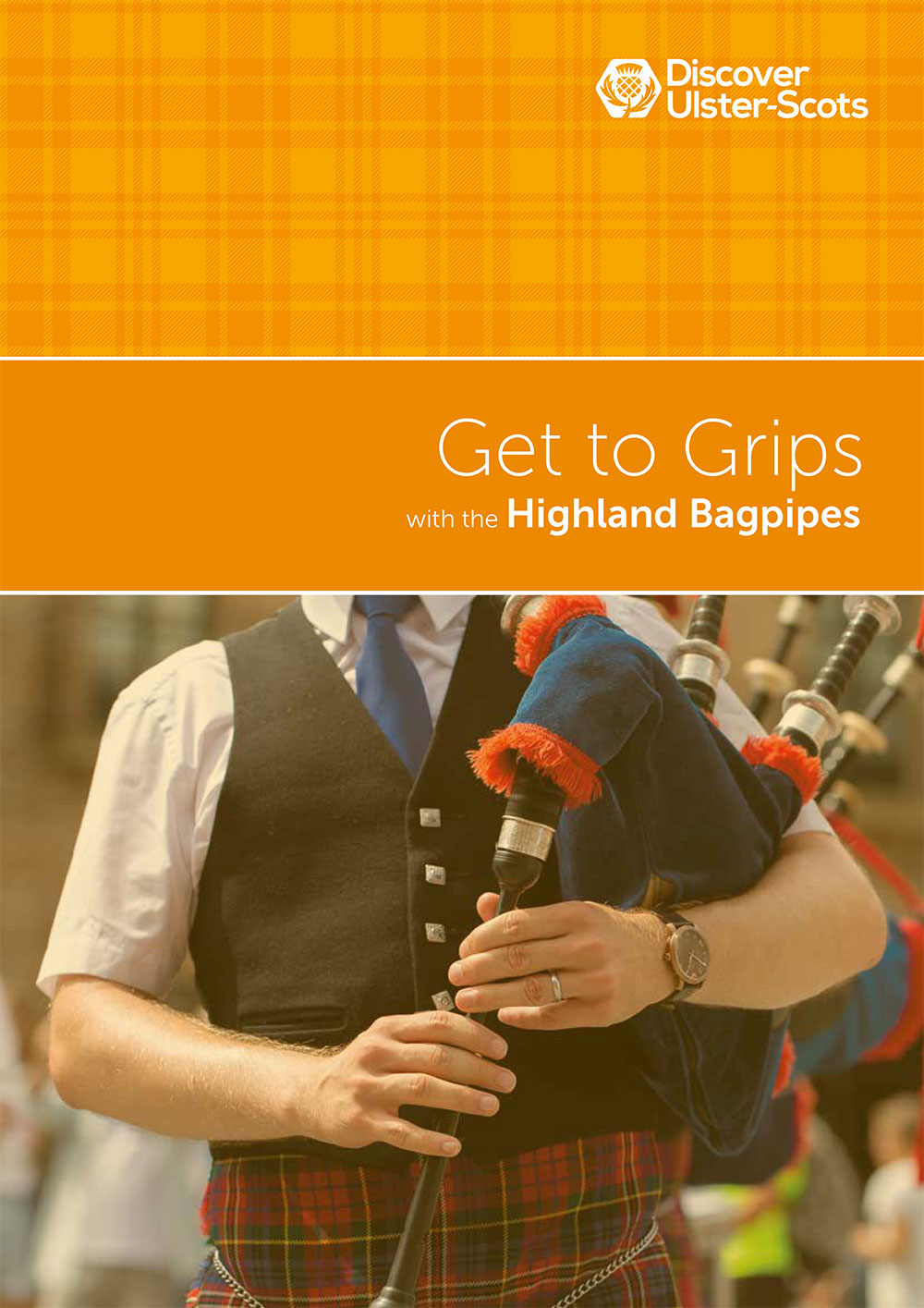Pipes & Piping
Bagpipes are renowned worldwide as being a traditional Scottish instrument, and most people associate bagpipes with Scotland. However, the origin of bagpipes is rather unclear. Pipes are a very old instrument. They are even mentioned in the Old Testament in the Bible, and it is believed early versions were brought across Europe from the Middle East (possibly from Egypt). Over the years, the bagpipes have changed. The first set of bagpipes only had one tenor drone. The second tenor drone was added years later, and the final bass drone was added by the Scottish about 300 years ago, making the Great Highland bagpipes as they are known today.
Related Documents

Get to Grips with the Highland Bagpipes
This book is one of a series that supports the Ulster-Scots Agency music tuition programmes.
5.5 MB
Drums are also believed to be very old, with ancient cave paintings featuring drummers. However, historically drums would have been used as an early form of communication, as well as for music. Nowadays, drums are part of the percussion group and accompany bagpipes to provide the rhythm and to enhance the music. Most pipe bands have snare drummers, tenor drummers and a bass drummer. The drummers play music specially written to fit the tune played on the pipes, with the bass drummer keeping time for the band.
There is only a 13-mile stretch of water separating Ulster and Scotland, so there has been a steady movement of people back and forth bringing their music, language and culture with them. Many Ulster-Scots people today enjoy listening to or playing the bagpipes and drums. Pipes are regularly played at community events such as Burns supper, community concerts, Hogmanay, weddings and funerals. Across Ulster, pipe bands play regularly in parades, demonstrations, workshops and competitions.
Today, some of the top pipers, drummers and pipe bands in the world are from Ulster. Many Ulster-Scots pipers and drummers travel to other countries all over the world to compete, perform and teach.
